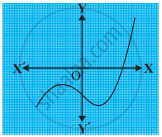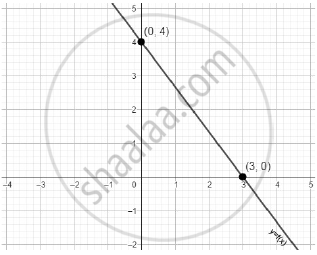Advertisements
Advertisements
प्रश्न
If α and β are the zeroes of the polynomial x2 + x − 2, then find the value of `alpha/beta+beta/alpha`
उत्तर
Step 1: Use Sum and Product of Roots
Sum of roots: `alpha+beta = ("−coefficient of x")/("coefficient of" x^2)`
Product of roots: `alpha beta = ("constant term")/("coefficient of" x^2) = -2/1 = -2`
Step 2: Find `alpha/beta + beta/alpha`
`alpha/beta + beta/alpha = (alpha^2 + beta^2)/(alphabeta)`
α2 + β2 = (α + β)2 − 2αβ
Substituting known values:
α2 + β2 = (−1) 2 − 2(−2)
= 1 + 4 = 5
`alpha/beta + beta/alpha = 5/-2`
`= -5/2`
APPEARS IN
संबंधित प्रश्न
The graphs of y = p(x) are given in following figure, for some polynomials p(x). Find the number of zeroes of p(x).

Find the zeroes of the polynomial `f(x) = x^2 ˗ 2x ˗ 8` and verify the relation between its zeroes and coefficients
Find the zeroes of the quadratic polynomial `f(x) = 5x^2 ˗ 4 ˗ 8x` and verify the relationship between the zeroes and coefficients of the given polynomial.
If one zero of the polynomial `x^2-4x+1 is (2+sqrt3)` , write the other zero.
Find the value of k such that the polynomial x2-(k +6)x+ 2(2k - 1) has some of its zeros equal to half of their product.
If the zeroes of the quadratic polynomial x2 + (a + 1) x + b are 2 and –3, then ______.
10. The zeroes of the quadratic polynomial x² + kx + k, k? 0.
If one of the zeroes of the cubic polynomial x3 + px² + qx + r is -1, then the product of the other two zeroes is ______.
Which of the following is not the graph of a quadratic polynomial?
The given linear polynomial y = f(x) has

